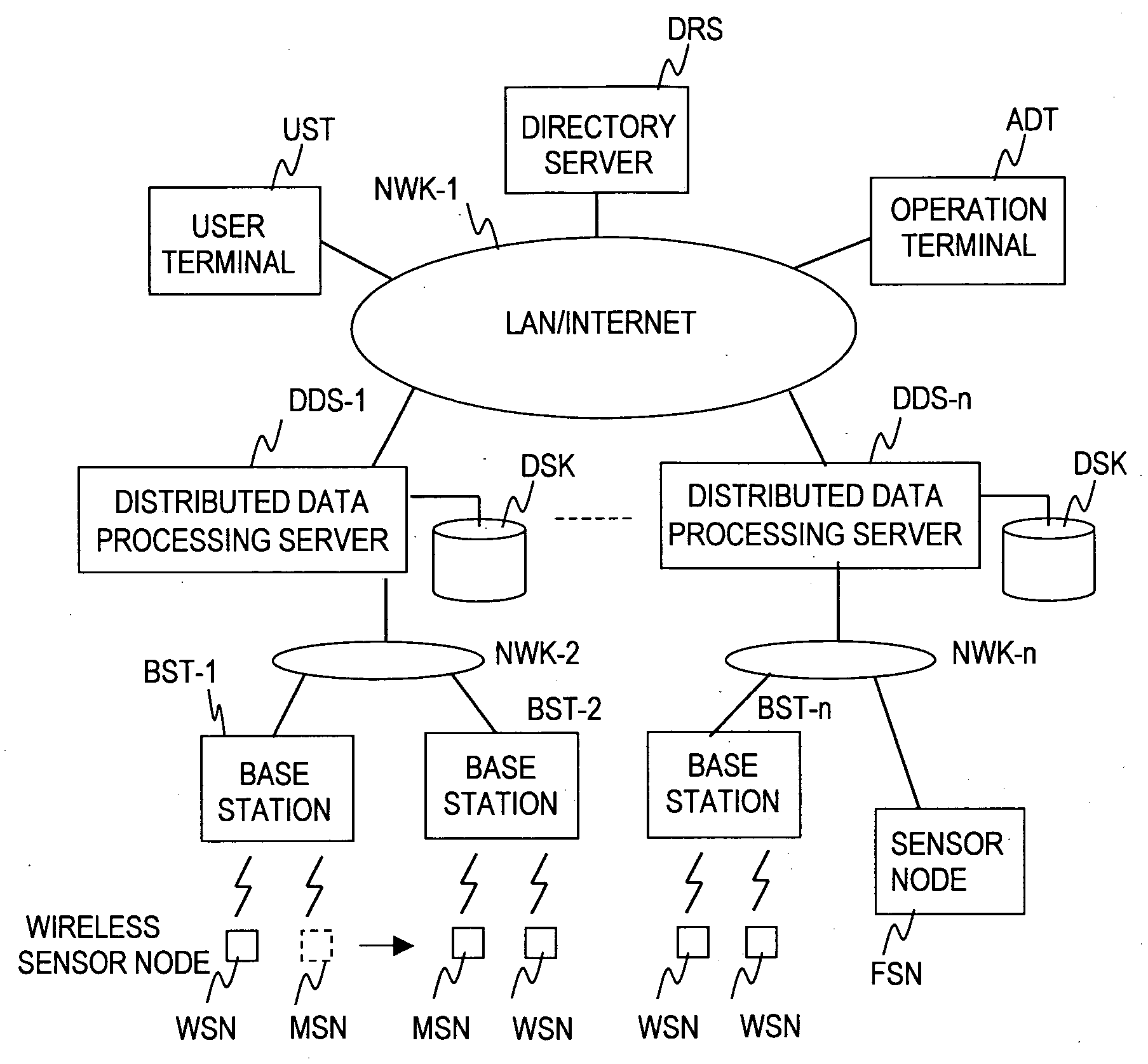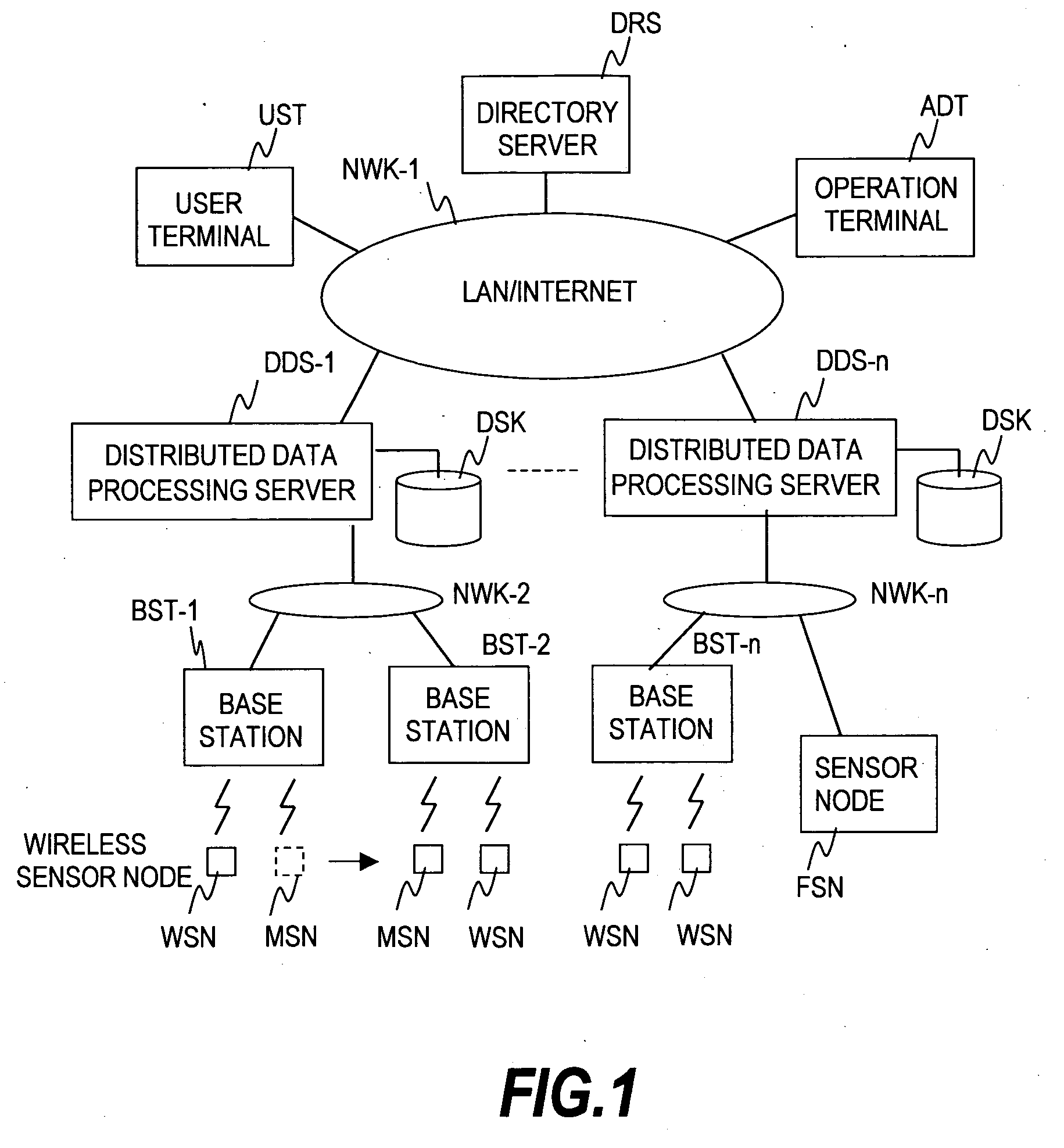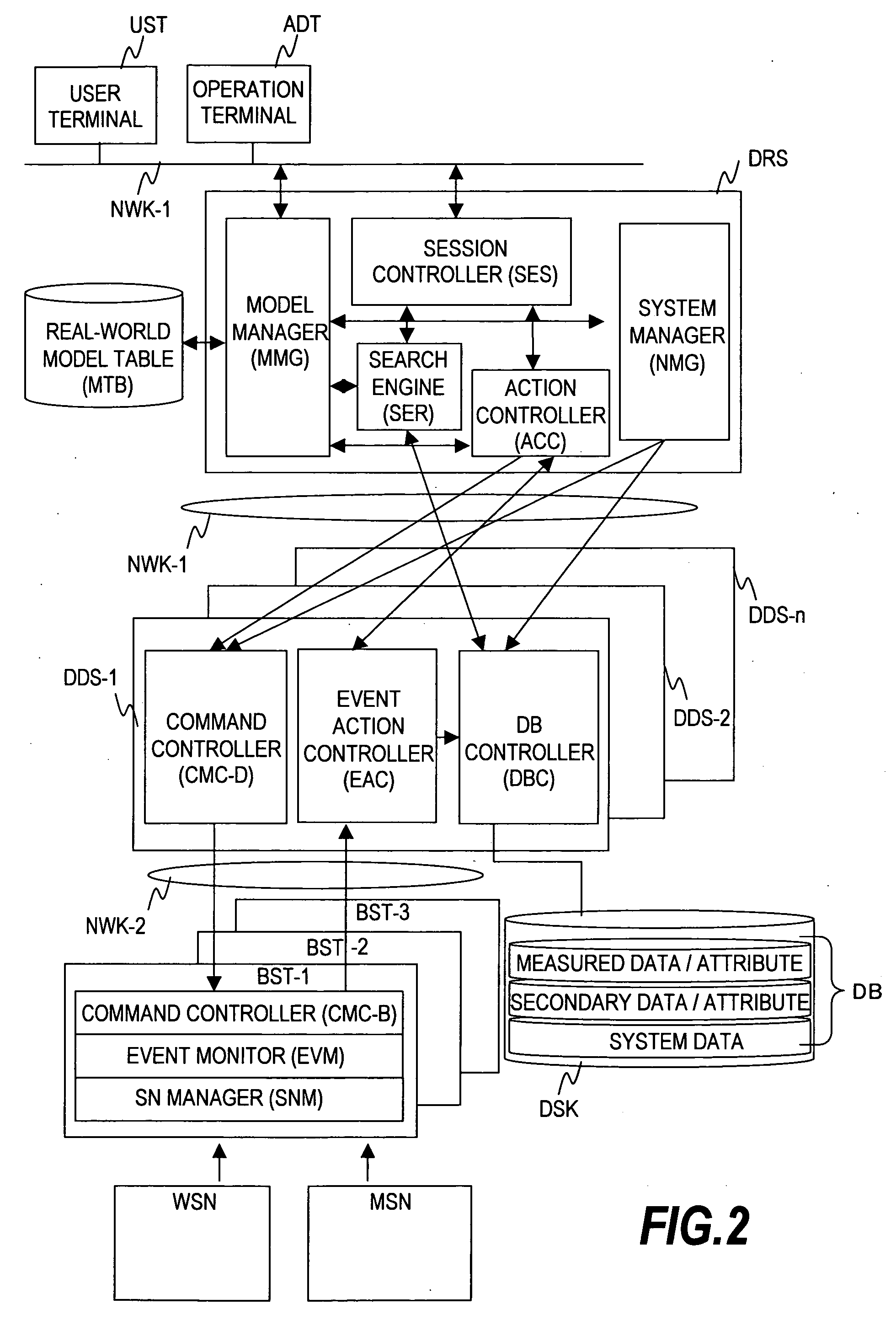Sensor network system and data transfer method for sensing data
a sensor network and data transfer technology, applied in the field of information use, can solve the problems of server processing bottlenecks, search engine not suitable for efficient retrieval of real-time information, etc., and achieve the effects of reducing data processing load, preventing excessive load of directory server and network, and reducing the load of data processing
- Summary
- Abstract
- Description
- Claims
- Application Information
AI Technical Summary
Benefits of technology
Problems solved by technology
Method used
Image
Examples
second embodiment
[0287] FIGS. 38 to 46 show a second embodiment where actions are executed in a distributed data processing server DDS. An action executer ACE is installed in the event-action controller EAC of the distributed data processing server DDS shown in FIG. 9, and the event table ETB of FIG. 10 is replaced by an event action table EATB for defining event generation and action execution. Other components are similar to those of the first embodiment. According to the second embodiment, a distributed data processing server DDS that becomes an external server directly transfers measured data of an external sensor node to a home server DDS.
[0288] In FIG. 38, the event-action controller EAC of the distributed data processing server DDS includes an event-action table EATB for correlating measured data collected from base stations BST to event actions through a network processor NWP.
[0289] The event-action controller EAC includes an action executer ACE for executing actions set in the event-actio...
third embodiment
[0329] FIGS. 47 to 49 show a third embodiment where a node search server NSS for holding information of a mobile sensor node is installed in addition to the directory server DRS and the distributed data processing server DDS of the second embodiment, and an internal node (home node) monitor agent NMA for monitoring an internal sensor node is added to the distributed data processing server DDS.
[0330] Referring to FIG. 47, an example of an overall operation will be described. A wireless mobile sensor node MSN-1 that is an internal sensor node of a distributed data processing server DDS-1 as a home server moves from a base station BST-1 under the home server to a base station BST-n under another distributed data processing server DDS-2 (external server).
[0331] Upon detection of a new external sensor node (MSN-1) from the base station BST-n, the external server transfers data of this wireless mobile sensor node MSN-1 as external (foreign) sensor node data FND to the node search server...
fourth embodiment
[0341]FIGS. 50 and 51 show a fourth embodiment of a processing procedure of transmitting a command (instruction) from the operation terminal ADT to the mobile sensor node in the first to third embodiments.
[0342] As shown in FIG. 3, a wireless mobile sensor node MSN as a mobile sensor node includes a power supply unit POW such as a battery, therefore it is important to manage a charge amount (residual power amount) of the power supply unit POW. As shown in FIG. 4, a period of a sleep state must be adjusted as it can operate intermittently. Accordingly, a system administrator must send a command from the operation terminal ADT to the mobile sensor node (MSN-1) to check a state or to change settings of the mobile sensor node.
[0343] In this case, unlike fixed sensor nodes, the mobile sensor node is not always near its home server. Thus, the manager cannot easily know which one of distributed data processing servers DDS-1 to n the mobile sensor node exists. For example, as shown in FIG...
PUM
 Login to View More
Login to View More Abstract
Description
Claims
Application Information
 Login to View More
Login to View More - R&D
- Intellectual Property
- Life Sciences
- Materials
- Tech Scout
- Unparalleled Data Quality
- Higher Quality Content
- 60% Fewer Hallucinations
Browse by: Latest US Patents, China's latest patents, Technical Efficacy Thesaurus, Application Domain, Technology Topic, Popular Technical Reports.
© 2025 PatSnap. All rights reserved.Legal|Privacy policy|Modern Slavery Act Transparency Statement|Sitemap|About US| Contact US: help@patsnap.com



